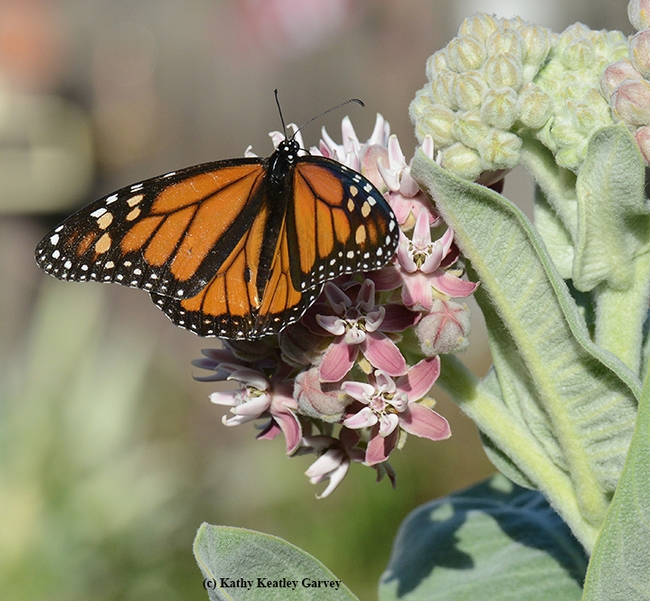If you grow milkweed in your yard, you probably have some very special tenants, monarch butterflies (Danaus plexippus). As just about every kindergarten student knows, milkweed (Asclepias spp,) is their larval host plant. Without milkweed, no monarchs.
Carl Linnaeus named the genus for the Greek god of healing, Asciepius. The son of Apollo, Asciepius was a hero and god of medicine in ancient Greek religion and mythology, according to Wikipedia.
For the past week, we've been watching a male monarch loop around our pollinator garden in search of females. Yes, it "floats" just like the late Muhammad Ali said a butterfly does. Several loops later and it needs more flight fuel. It zip-zags down, sips some nectar from the six-foot-high broadleaf milkweed (Asclepias speciosa), or drops down to the lower elevation of a Jupiter's Beard. Then it's off again.
It's like watching a work of art--an exquisite stained glass window--take flight, touch down, and feed. The adults will feed on many nectar plants but their caterpillars will feed only on milkweed.
Like to help the monarchs and plant milkweed? See the Xerces Society's Project Milkweed.
Attached Images:

A monarch butterfly sipping nectar from a broadleaf milkweed, Asclepias speciosa. (Photo by Kathy Keatley Garvey)

The milkweed is so named for its milky juice, consisting of a latex containing alkaloids and other complex compounds. Carl Linnaeus named the genus for the Greek god of healing, Asciepius. (Photo by Kathy Keatley Garvey)

The glow of a monarch butterfly is like a stained glass window.(Photo by Kathy Keatley Garvey)